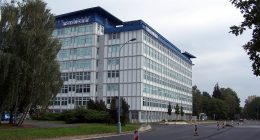An engineering team at National University of Singapore (NUS) has invented a nanofibre solution that transforms non-woven mesh into see-through air filters that clean air, improve air flow and offer UV protection.
The research was led by Assistant Professor Tan Swee Ching from the Department of Materials Science and Engineering at the NUS Faculty of Engineering. Sai Kishore Ravi from the NUS Department of Materials Science and Engineering, and Dr. Varun Kumar Singh, who was formerly with the Department, were also the part of the team. The complete study and its findings have been recently published in the online version of the scientific journal, Small.
The air filters help in improving natural lighting and visibility while blocking hazardous ultraviolet rays. Also, they are suitable for applications on windows and doors to improve indoor air quality. Assistant Professor Tan Swee Ching, said,
Our team has developed a simple, quick and cost-effective way of producing high-quality air filters that effectively remove harmful particles and further improves indoor air quality by enhancing air ventilation and reducing harmful UV rays. In the long run, it may even be possible for a DIY (do-it-yourself) kit to be made available commercially for consumers to make air filters at home.
The air filters are two times better in quality than the commercial ones and have promising applications in respirators.
The quality of air filters is evaluated by a parameter called quality factor, which is further dependent on two sub-factors, viz, particle filtration efficiency and air permeability. Currently, the existing respirators exhibit a high particle filtration efficiency but air permeability is still low, which, thereby results in a low-quality factor.
The newly invented eco-friendly filters have the capacity to remove up to 90 percent of the harmful particles less than 2.5 microns in size, which are referred to as PM2.5 particles and are considered to be responsible for various health threats. They maintain air flow that is 2.5 times better than the commercial respirators, resulting in better breathability. The particle filtration efficiency can be further enhanced, based on the purpose and functionality of the air filter.
Tan explained high-efficiency air filters often require multiple layers of microfibres or nanofibres which limit their transparency and therefore, are not that suitable to be incorporated in doors and windows of buildings. He further adds,
The see-through air filter developed using our approach has promising applications in terms of improving indoor air quality, and could be especially useful for countries experiencing haze or with high pollution levels. While increasing filtration efficiency will lead to a trade-off in air flow, the overall performance of our air filter is still better than commercial respirators.
The NUS team has filed a patent for this invention and is looking into adding more functionalities, such as anti-bacterial properties, into the air filter. The team is also planning to collaborate with industry partners to commercialize the invented technology.





